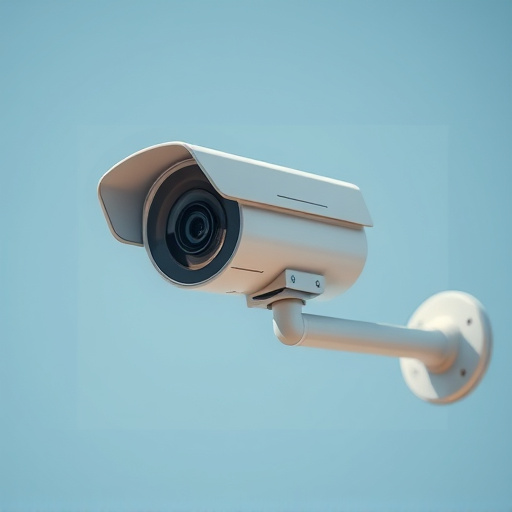Retail stores can now use realistic mock surveillance cameras, known as Fake Surveillance Camera Positioning Guides, to deter theft and vandalism. Strategically placed in high-risk areas, these decoys create an illusion of constant watchful eye, significantly reducing criminal activity while offering flexibility for store layout changes. However, proper placement and regular maintenance are crucial to maintain legality and effectiveness, with legal consultation recommended.
“Enhance your retail store’s security without breaking the bank with mock security cameras. This comprehensive guide explores the multifaceted benefits of implementing fake surveillance equipment, offering a cost-effective deterrent to potential thieves. We’ll delve into strategic placement techniques for maximum impact, covering various types available in the market today.
Furthermore, we’ll navigate the legal landscape surrounding dummy cameras, providing best practices to ensure compliance and optimal use. Get ready to transform your store with our Fake Surveillance Camera Positioning Guide.”
- Understanding the Benefits of Mock Security Cameras in Retail
- Strategizing Fake Camera Placement for Optimal Deterrence
- Types of Mock Surveillance Equipment Available in the Market
- Legal Considerations and Best Practices for Using Dummy Cameras
Understanding the Benefits of Mock Security Cameras in Retail
Retail stores have long relied on security cameras as a deterrent for theft and vandalism, but mock security cameras offer an innovative twist. These realistic-looking fake surveillance camera positioning guides are not just visual decoys; they provide multiple advantages in enhancing store security. By strategically placing these fake cameras around the retail space, businesses can significantly reduce actual criminal activity.
Unlike traditional security systems that may alert intruders of their surveillance, mock cameras act as a psychological barrier. They deter potential thieves by creating an environment where every corner is under watchful eye, even if it’s not actively recording. This simple yet effective tactic encourages honest behavior and makes it harder for criminals to target the store. Moreover, these fake camera positioning guides are versatile tools that can be easily moved or rearranged to adapt to changing store layouts and security needs.
Strategizing Fake Camera Placement for Optimal Deterrence
When strategizing the placement of mock security cameras in retail stores, a well-planned fake camera positioning guide is essential for optimal deterrent effects. Positioning cameras in high-theft zones, near exit points, and at eye level throughout the store creates an illusion of constant surveillance. This can significantly discourage potential thieves, as real surveillance footage shows that most thefts occur when guards or cameras are not actively monitoring those areas.
For maximum impact, place fake cameras on visible walls or ceilings in strategic locations. Avoid obvious spots where real cameras might be installed; instead, focus on less predictable angles and blind spots. Intersperse realistic-looking mock cameras with static decoys to create an unpredictable arrangement that is more effective at deterring would-be criminals. Regularly rearranging the camera placements can further enhance their deterrent value, keeping potential thieves off-guard.
Types of Mock Surveillance Equipment Available in the Market
In today’s digital era, retail stores are continually seeking innovative ways to enhance their security measures while maintaining an aesthetically pleasing environment. One effective solution gaining popularity is the use of mock surveillance equipment, specifically fake surveillance cameras. These lifelike replicas offer a practical and cost-effective alternative to traditional security systems. On the market, you’ll find a diverse range of options tailored for various retail settings, from high-end boutiques to discount grocery stores.
When it comes to fake camera positioning, there’s a guide to suit every store’s needs. Some manufacturers offer static models that mimic the look of real cameras mounted on walls or ceilings, ideal for creating a sense of constant surveillance without the actual hardware. Others provide more dynamic options, such as remote-controlled or wireless cameras that can be discretely moved and positioned for different scenarios. This flexibility allows retailers to strategically place these devices in high-theft areas, entry points, or merchandise display zones, effectively deterring potential thieves while creating a safe and secure shopping environment.
Legal Considerations and Best Practices for Using Dummy Cameras
When implementing mock security cameras, or fake surveillance cameras, in retail stores, it’s crucial to understand and adhere to legal considerations. While dummy cameras offer a cost-effective and practical solution for deterring crime, their use must comply with local laws and regulations regarding privacy rights, particularly concerning consumer and employee monitoring. Retailers should consult with legal professionals to ensure that the placement of these devices respects individual privacy without infringing upon legitimate business interests.
Best practices dictate that fake surveillance cameras should be strategically positioned, mimicking real camera locations but not compromising customer or employee comfort. A Fake Surveillance Camera Positioning Guide can help businesses place these decoys in visible areas like entryways, exit points, and high-theft zones. However, it’s essential to ensure that the devices are clearly labeled as fakes to avoid creating a false sense of security. Additionally, regular maintenance and routine checks can help keep these cameras functional and maintain their integrity as deterrents.
Mock security cameras, when strategically placed using a comprehensive guide like this Fake Surveillance Camera Positioning Guide, offer retailers an effective and cost-efficient deterrent against theft. By understanding the benefits, planning thoughtful placement, selecting the right equipment, and adhering to legal best practices, businesses can enhance their loss prevention efforts while maintaining a professional image.
